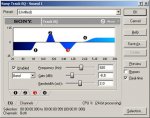PizzImperfect
New member
Hi All,
If you're aware of a guide somewhere which explains this alittle, please just link it up and don't worry about explaining it all.
I record pretty basic tracks, usually just my vocal and my guitar.. sometimes a drum machine.
I've just been reading about 'fine-tuning' a vocal sound and it VERY vaguely touched on using high/low pass filtering to get rid of frequencies that are too high and obviously low...
Just wondering, how is it generally done? And.. if the frequencies are too high/low to hear.. why cut them out ?
Apologies if its a n00b/repeated question!
If you're aware of a guide somewhere which explains this alittle, please just link it up and don't worry about explaining it all.
I record pretty basic tracks, usually just my vocal and my guitar.. sometimes a drum machine.
I've just been reading about 'fine-tuning' a vocal sound and it VERY vaguely touched on using high/low pass filtering to get rid of frequencies that are too high and obviously low...
Just wondering, how is it generally done? And.. if the frequencies are too high/low to hear.. why cut them out ?
Apologies if its a n00b/repeated question!




